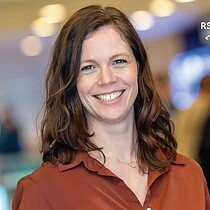

Article: Wednesday, 11 January 2017
Portfolio managers and investors use a range of financial and non-financial indicators to describe and compare stock portfolios. A new set of indicators, developed by Ghassan Chammas of Rotterdam School of Management, Erasmus University (RSM), now provides extra insights into stock portfolios by revealing how concentrated and specialised they are. Unlike other indicators, Chammas’ are free of estimation errors. They can help investors with monitoring and managing a portfolio’s stock diversification. He will defend his thesis on 26 january 2017.
Using the usual indicators– such as past-performance, volatility and price-to-earnings ratio – to compare stock portfolios might show comparable expected returns, says researcher Chammas. These predictions could even have the same standard deviation.
But what these numbers do not reveal is the extent to which investments are skewed towards a relatively small number of stocks, or a particular industry or country.
To quantify this concentration and specialisation of stock investments, Chammas decided to apply two indexes that are normally used in other contexts: the Herfindahl index normally describes the size of a firm in relation to the industry, and the Gini index is often used to specify the measure of inequality in a country’s income distribution.

Applied to stock portfolios, these indexes can be used to support investors in their allocation decisions: what stocks should they buy and sell, and how much should they invest in each stock? In practice, Chammas says, investments are continuously reallocated, so depending on the strategy, a portfolio might unwittingly become more concentrated or specialised over time.
For example, investors that consistently decide to invest in high-yielding ‘stocks-of-the-moment’ might find their portfolio becoming increasingly concentrated on just a few stocks.
Other investors who strategically focus on stocks with a high market capitalisation might find that after some time, a large percentage of their portfolio is based in the technology sector, because technology firms are among those that have increased most in value in recent years. On the other hand, the value of agriculture stocks has slipped, so investors with a high market capitalisation strategy in that sector could lose out.
Chammas says that specialisation can be calculated for any attribute of a particular stock. And the more attributes under consideration, the clearer the picture. For example, the indicators might show that investments are concentrated in three of its fifteen stocks, and is specialised in pharmaceutical firms in Japan and mining firms in Malaysia.
The researcher stresses that this concentration and specialisation is not necessarily a problem, as long as investors are aware it is happening and are not blindsided by it.
Chammas says it is still hard to say how concentration and specialisation are linked to long-term performance of stock portfolios. But future research might reveal the link, he says, in which case these indexes could be used to improve the accuracy of existing forecasting models. In the meantime, these indicators already add a useful layer of analytical insight to stock portfolios, he concludes.
Orion Capital S.A.L.


Science Communication and Media Officer
Rotterdam School of Management, Erasmus University (RSM) is one of Europe’s top-ranked business schools. RSM provides ground-breaking research and education furthering excellence in all aspects of management and is based in the international port city of Rotterdam – a vital nexus of business, logistics and trade. RSM’s primary focus is on developing business leaders with international careers who can become a force for positive change by carrying their innovative mindset into a sustainable future. Our first-class range of bachelor, master, MBA, PhD and executive programmes encourage them to become to become critical, creative, caring and collaborative thinkers and doers.
